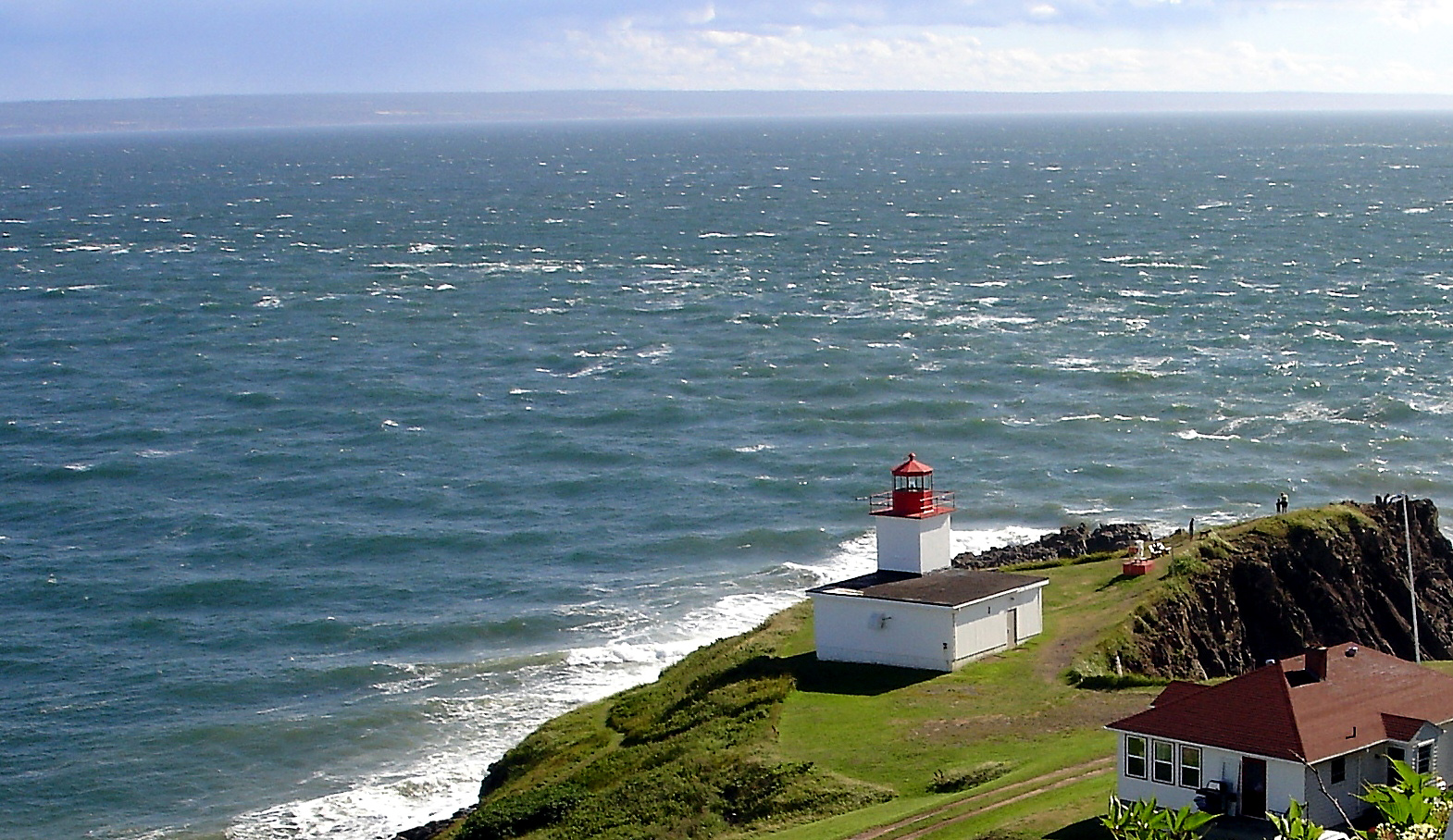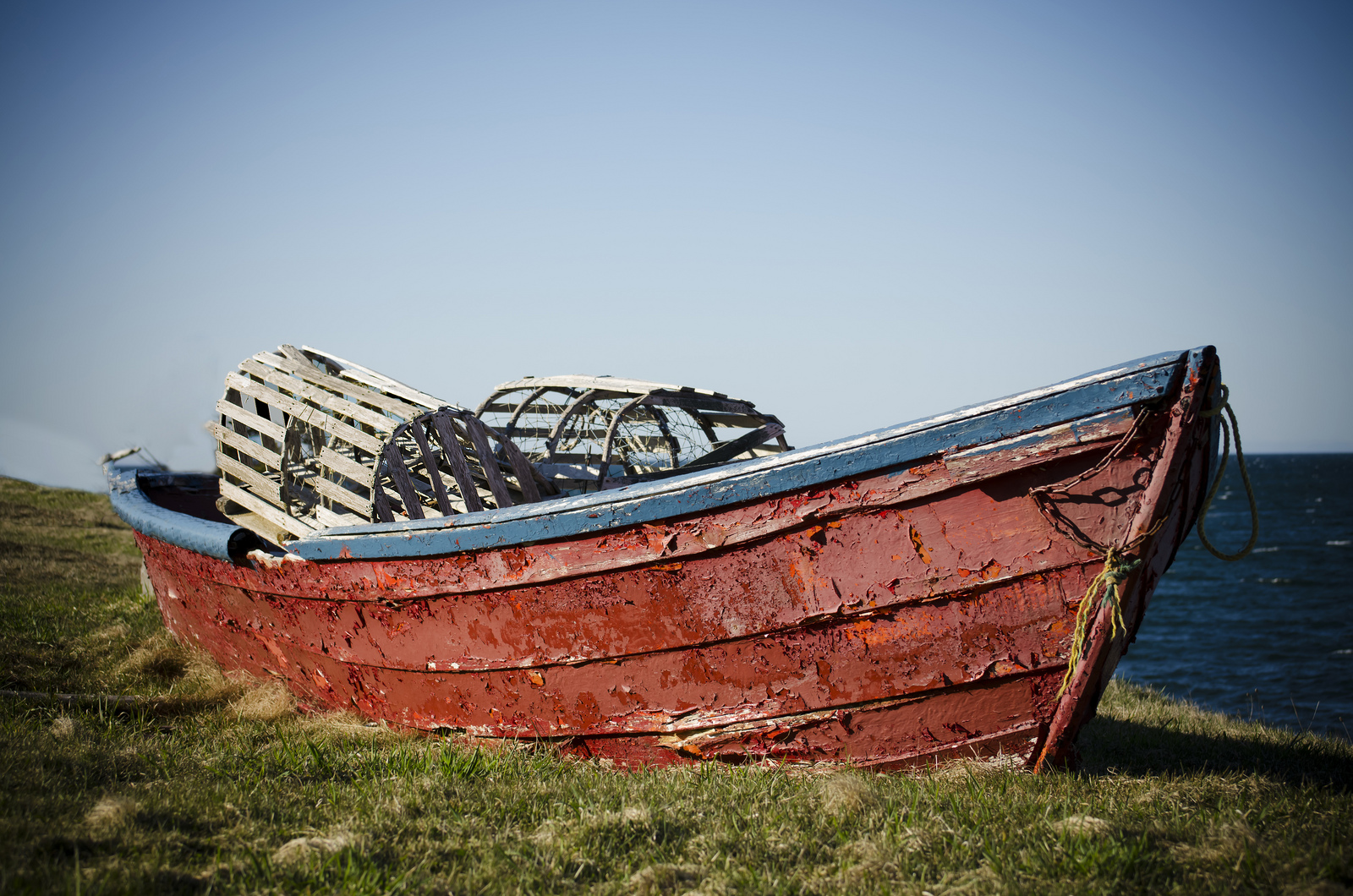|
Dory Rips
The Dory Rips is a phenomenon involving extreme tidal agitation of waters located in the Bay of Fundy off the headland of Cape d'Or in Nova Scotia, Canada. The phenomenon occurs at the entrance to the Minas Basin, which is known for the globe's highest tides. The turbulence does not result from a simple rip tide, but rather from the collision of three opposed tidal currents whose violence is enhanced by the presence of a subsurface reef that forces the water upward. The powerful incoming tidal current loops back and collides with itself while another current, coursing in semicircular fashion around Advocate Bay, slams into the collision point at a 90-degree angle. Marine Hazard To warn mariners away from the Dory Rips, a foghorn was placed at Cape d'Or in 1875 and a lighthouse, which is still operational, was established in 1922. See also * Rip current A rip current, often simply called a rip (or misleadingly a ''rip tide''), is a specific kind of water current that can ... [...More Info...] [...Related Items...] OR: [Wikipedia] [Google] [Baidu] |
Dory Rips In Minas Channel Nova Scotia Canada 2007
A dory is a small, shallow-draft boat, about long. It is usually a lightweight boat with high sides, a flat bottom and sharp bows. It is easy to build because of its simple lines. For centuries, the dory has been used as a traditional fishing boat, both in coastal waters and in the open sea. Definition Strictly speaking, the only true defining characteristic of the dory is that it is planked with wide straight boards running fore-and-aft; "It should be well understood, that it is the dory's special mode of construction, not its hull shape, that sets it, and its related sub-types apart from other boats".Gardner, page 15. More generally speaking, the dory can be defined as a small boat which has: * a flat bottom, with the bottom planks fastened lengthwise (bow to stern). * a hull shape defined by the natural curve of a sawn plank (never steam-bent). * planks overlapping the stem at the front of the boat and an outer "false" stem covering the hood ends of the planks. * (with som ... [...More Info...] [...Related Items...] OR: [Wikipedia] [Google] [Baidu] |
Tide
Tides are the rise and fall of sea levels caused by the combined effects of the gravity, gravitational forces exerted by the Moon (and to a much lesser extent, the Sun) and are also caused by the Earth and Moon orbiting one another. Tide tables can be used for any given locale to find the predicted times and amplitude (or "tidal range"). The predictions are influenced by many factors including the alignment of the Sun and Moon, the #Phase and amplitude, phase and amplitude of the tide (pattern of tides in the deep ocean), the amphidromic systems of the oceans, and the shape of the coastline and near-shore bathymetry (see ''#Timing, Timing''). They are however only predictions, the actual time and height of the tide is affected by wind and atmospheric pressure. Many shorelines experience semi-diurnal tides—two nearly equal high and low tides each day. Other locations have a diurnal cycle, diurnal tide—one high and low tide each day. A "mixed tide"—two uneven magnitude ... [...More Info...] [...Related Items...] OR: [Wikipedia] [Google] [Baidu] |
Bay Of Fundy
The Bay of Fundy (french: Baie de Fundy) is a bay between the Canadian provinces of New Brunswick and Nova Scotia, with a small portion touching the U.S. state of Maine. It is an arm of the Gulf of Maine. Its extremely high tidal range is the highest in the world. The name is likely a corruption of the French word , meaning 'split'. Hydrology Tides The tidal range in the Bay of Fundy is about ; the average tidal range worldwide is only . Some tides are higher than others, depending on the position of the moon, the sun, and atmospheric conditions. Tides are semidiurnal, meaning they have two highs and two lows each day, with about six hours and 13 minutes between each high and low tide. Because of tidal resonance in the funnel-shaped bay, the tides that flow through the channel are very powerful. In one 12-hour tidal cycle, about 100 billion tons (110 billion short tons) of water flows in and out of the bay, which is twice as much as the combined total flow of all the rive ... [...More Info...] [...Related Items...] OR: [Wikipedia] [Google] [Baidu] |
Cape D'Or
Cape d'Or is a headland located near Advocate, Cumberland County, on the Bay of Fundy coast of the Canadian province of Nova Scotia. The cape marks the north point of the entrance to the Minas Basin. Cape d'Or is a continuation of the North Mountain tholeiitic basalt formation, and is marked by dramatic cliffs on its western side and cliffs on its southern side overlooking treacherous tidal currents in the Minas Channel. A basalt reef extends from the Cape into the Bay of Fundy where it intersects the violent waters of the Dory Rips, a rip tide created by the collision of three strong tidal currents. History Cape d'Or was called L'mu'juiktuk by the Mi'kmaq, the native people of Nova Scotia. The cape was a centre of tool production and trade for the Mi'kmaq because of veins of hard dense rock such as chert which could be shaped to form sharp edges for tools and weapons. The Mi'kmaq also obtained copper from deposits in the basalt. An archaeological excavation near the lighthous ... [...More Info...] [...Related Items...] OR: [Wikipedia] [Google] [Baidu] |
Nova Scotia
Nova Scotia ( ; ; ) is one of the thirteen provinces and territories of Canada. It is one of the three Maritime provinces and one of the four Atlantic provinces. Nova Scotia is Latin for "New Scotland". Most of the population are native English-speakers, and the province's population is 969,383 according to the 2021 Census. It is the most populous of Canada's Atlantic provinces. It is the country's second-most densely populated province and second-smallest province by area, both after Prince Edward Island. Its area of includes Cape Breton Island and 3,800 other coastal islands. The Nova Scotia peninsula is connected to the rest of North America by the Isthmus of Chignecto, on which the province's land border with New Brunswick is located. The province borders the Bay of Fundy and Gulf of Maine to the west and the Atlantic Ocean to the south and east, and is separated from Prince Edward Island and the island of Newfoundland by the Northumberland and Cabot straits, ... [...More Info...] [...Related Items...] OR: [Wikipedia] [Google] [Baidu] |
Minas Basin
, image = Lookout On Way to Cape Split - 25006718579.jpg , alt = , caption = Looking east across the Southern Bight of Minas Basin from The Lookoff , image_bathymetry = , alt_bathymetry = , caption_bathymetry = , location = Nova Scotia , group = , coordinates = , type = Inlet , etymology = , part_of = Bay of Fundy , inflow = , rivers = , outflow = , oceans = , catchment = , basin_countries = , agency = , designation = , date-built = , engineer = , date-flooded = , length = , width = , area = , depth = , max-depth = , volume = , residence_time = , salinity = , shore = , elevation = , temperature_high = ... [...More Info...] [...Related Items...] OR: [Wikipedia] [Google] [Baidu] |
Rip Tide
A rip tide, or riptide, is a strong offshore current that is caused by the tide pulling water through an inlet along a barrier beach, at a lagoon or inland marina where tide water flows steadily out to sea during ebb tide. It is a strong tidal flow of water within estuaries and other enclosed tidal areas. The riptides become the strongest where the flow is constricted. When there is a falling or ebbing tide, the outflow water is strongly flowing through an inlet toward the sea, especially once stabilized by jetties. During these falling and ebbing tides, a riptide can carry a person far offshore. For example, the ebbing tide at Shinnecock Inlet in Southampton, New York, extends more than offshore. Because of this, riptides are typically more powerful than rip currents. During slack tide, the water is motionless for a short period of time until the flooding or rising tide starts pushing the sea water landward through the inlet. Riptides also occur at constricted areas in bays an ... [...More Info...] [...Related Items...] OR: [Wikipedia] [Google] [Baidu] |
Reef
A reef is a ridge or shoal of rock, coral or similar relatively stable material, lying beneath the surface of a natural body of water. Many reefs result from natural, abiotic processes— deposition of sand, wave erosion planing down rock outcrops, etc.—but there are also reefs such as the coral reefs of tropical waters formed by biotic processes dominated by corals and coralline algae, and artificial reefs such as shipwrecks and other anthropogenic underwater structures may occur intentionally or as the result of an accident, and sometimes have a designed role in enhancing the physical complexity of featureless sand bottoms, to attract a more diverse assemblage of organisms. Reefs are often quite near to the surface, but not all definitions require this. Earth's largest coral reef system is the Great Barrier Reef in Australia, at a length of over . Biotic There is a variety of biotic reef types, including oyster reefs and sponge reefs, but the most massive and widely ... [...More Info...] [...Related Items...] OR: [Wikipedia] [Google] [Baidu] |
Advocate Bay
An advocate is a professional in the field of law. Different countries' legal systems use the term with somewhat differing meanings. The broad equivalent in many English law–based jurisdictions could be a barrister or a solicitor. However, in Scottish, Manx, South African, Italian, French, Spanish, Portuguese, Scandinavian, Polish, Israeli, South Asian and South American jurisdictions, "Advocate" indicates a lawyer of superior classification. "Advocate" is in some languages an honorific for lawyers, such as " Adv. Sir Alberico Gentili". "Advocate" also has the everyday meaning of speaking out to help someone else, such as patient advocacy or the support expected from an elected politician; this article does not cover those senses. Europe United Kingdom and Crown dependencies England and Wales In England and Wales, Advocates and proctors practiced civil law in the Admiralty Courts and also, but in England only, in the ecclesiastical courts of the Church of England, i ... [...More Info...] [...Related Items...] OR: [Wikipedia] [Google] [Baidu] |
Dory Rips Diagram In Govt Parking Lot At Cape D Or Lookout Nova Scotia Canada 2007
A dory is a small, shallow-draft boat, about long. It is usually a lightweight boat with high sides, a flat bottom and sharp bows. It is easy to build because of its simple lines. For centuries, the dory has been used as a traditional fishing boat, both in coastal waters and in the open sea. Definition Strictly speaking, the only true defining characteristic of the dory is that it is planked with wide straight boards running fore-and-aft; "It should be well understood, that it is the dory's special mode of construction, not its hull shape, that sets it, and its related sub-types apart from other boats".Gardner, page 15. More generally speaking, the dory can be defined as a small boat which has: * a flat bottom, with the bottom planks fastened lengthwise (bow to stern). * a hull shape defined by the natural curve of a sawn plank (never steam-bent). * planks overlapping the stem at the front of the boat and an outer "false" stem covering the hood ends of the planks. * (with som ... [...More Info...] [...Related Items...] OR: [Wikipedia] [Google] [Baidu] |
Foghorn
A foghorn or fog signal is a device that uses sound to warn vehicles of navigational hazards such as rocky coastlines, or boats of the presence of other vessels, in foggy conditions. The term is most often used in relation to marine transport. When visual navigation aids such as lighthouses are obscured, foghorns provide an audible warning of rock outcrops, shoals, headlands, or other dangers to shipping. Description All foghorns use a vibrating column of air to create an audible tone, but the method of setting up this vibration differs. Some horns, such as the Daboll trumpet, used vibrating plates or metal reeds, a similar principle to a modern electric car horn. Others used air forced through holes in a rotating cylinder or disk, in the same manner as a siren. Semi-automatic operation of foghorns was achieved by using a clockwork mechanism (or "coder") to sequentially open the valves admitting air to the horns; each horn was given its own timing characteristics to help marine ... [...More Info...] [...Related Items...] OR: [Wikipedia] [Google] [Baidu] |
Lighthouse
A lighthouse is a tower, building, or other type of physical structure designed to emit light from a system of lamps and lenses and to serve as a beacon for navigational aid, for maritime pilots at sea or on inland waterways. Lighthouses mark dangerous coastlines, hazardous shoals, reefs, rocks, and safe entries to harbors; they also assist in aerial navigation. Once widely used, the number of operational lighthouses has declined due to the expense of maintenance and has become uneconomical since the advent of much cheaper, more sophisticated and effective electronic navigational systems. History Ancient lighthouses Before the development of clearly defined ports, mariners were guided by fires built on hilltops. Since elevating the fire would improve the visibility, placing the fire on a platform became a practice that led to the development of the lighthouse. In antiquity, the lighthouse functioned more as an entrance marker to ports than as a warning signal for reefs a ... [...More Info...] [...Related Items...] OR: [Wikipedia] [Google] [Baidu] |







